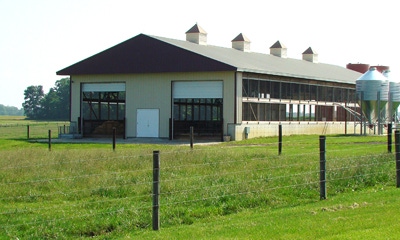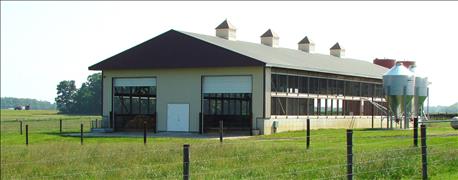May 3, 2016

Before George and David Brand of DeKalb County built their new calf barn in 2011, they knew something had to give.
“Our old facilities were overcrowded and underventilated. We were using a lot of labor to clean stalls and bottles. And we were having too many health problems,” says George.
But before building, they did their homework. They checked out ideas at the World Dairy Expo in Madison, Wis., in October and visited other calf barns in Michigan, Ohio and Indiana.
In April 2011, they moved all of their calves into an new, attractive and functional 48-by-120-foot facility. There, heifers become replacements for their cow herd, and bulls become steers to be finished on the farm.

NEW BARN: The Brand family says building a new calf barn was one of the best things they’ve done at their dairy farm in DeKalb County.
Some primary features include: gradually sloping floors in the pen areas, which helps to keep bedding dry; four functional cupolas; ventilation tubes and fans, which provide excellent ventilation; no place for birds to perch or take up residence, plus netting around the eaves to keep them out; 18-foot sidewalls to provide an abundance of sunlight; adjustable, translucent sidewall curtains; overhead doors opening into wide alleys; and an automatic calf feeder.
George and David say there have been multiple benefits. The new barn requires much less labor, but in more pleasant working conditions. With the auto feeder, calves receive computerized rations as well as individualized monitoring. Calves are healthier and gain faster, which George says helps the heifers actually work into the herd two months sooner.
“The calves are much quieter and more contented, because they can eat whenever they want to rather than just twice a day,” says George.
After five years, they wouldn’t change much, although they have replaced their original automatic feeder.
“The first one was cheaper, and we should have spent a little more and got it right,” says David.
Boone writes from Wabash.
You May Also Like




